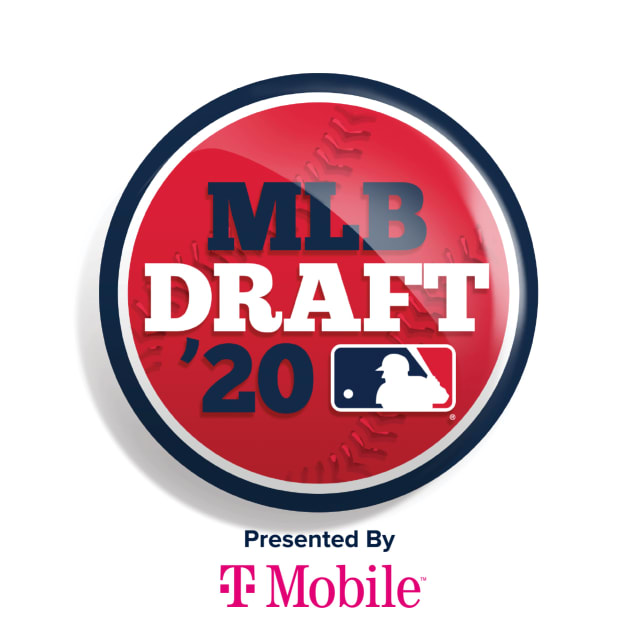Everything to know about Mets' 2020 Draft
This browser does not support the video element.
NEW YORK -- Under Brodie Van Wagenen, the Mets’ goal the past two Drafts has been to infuse their system with the highest-end talent possible -- not just in the first round, but throughout the Draft as well. To do so, they took risks that other teams did not, pursuing players despite signability concerns in the third round last year and the second round this week.
While years must pass before the Mets know how they fared, they are as excited by this two-year group of Draft prospects -- Brett Baty, Josh Wolf and Matthew Allan in 2019, Pete Crow-Armstrong, J.T. Ginn, Isaiah Greene this week -- as any in recent memory.
• Mets Draft Tracker: Every 2020 pick
“What we focused on and prioritized -- similar to what we did last year -- was high-end, high-impact talent,” said Van Wagenen, the Mets' executive vice president and general manager. “In any Draft, people want to try to acquire Major League players that can impact their club either now or in the future, and you hope to get the best player you can at a particular spot. This year, we had the opportunity again to be very aggressive in targeting players that, frankly, sat among the top players on our overall Draft board.”
Now what?
The most pressing item of note for the Mets will be signing a group of non-drafted free agents, of which there are many due to the nature of this year’s five-round Draft. The Mets hope to lure some exceptional ones, Van Wagenen said, with the promise of New York grandeur.
Once that’s complete, the Mets’ most significant challenge will be signing Crow-Armstrong, Ginn and Greene to deals. They’re confident in all three, just as they were with Allan a year ago, but their Draft cannot be considered a success until that ink is dry. Although Ginn’s Draft slot is only $1.4 million, the Mets have more than $7.2 million to spend on the entire Draft, so they could conceivably allocate a greater portion of that money toward signing Ginn.
• Mets select 'magician in CF' Crow-Armstrong
The signing deadline this year is Aug. 1.
If a club exceeds its assigned pool, it faces a penalty. Teams that outspend their allotment by 0-5 percent pay a 75 percent tax on the overage. At higher thresholds, clubs lose future picks: a first-rounder and a 75 percent tax for surpassing their pool by more than 5 and up to 10 percent; a first- and a second-rounder and a 100 percent tax for more than 10 and up to 15 percent; and two first-rounders and a 100 percent tax for more than 15 percent.
In eight years with these rules, teams have exceeded these allotment a total of 149 times but never by more than 5 percent. Twenty-one of the 30 teams outspent their pool last year.
Trend wrap
Just like in 2019, the Mets were aggressive up top, supplementing the first-round pick of Crow-Armstrong with two other high-ceiling players in Ginn and Greene. Signing them all will not be easy, but the Mets again took players with lesser pedigrees in the rounds that followed as a way to allocate more of their slot dollars to earlier picks.
First-round fact
Not only did Crow-Armstrong’s mother play Jenny Heywood in the movie “Little Big League,” but his father, Matthew John Armstrong, is also an actor who has appeared in TV shows including “Heroes,” “Bones,” “Scandal” and “NCIS.”
• 10 things to know about Mets' top Draft choice
This browser does not support the video element.
Day 2 name to watch
Ginn is the 2020 version of Allan, a first-round talent who throws in the upper 90s and has frontline potential. He carries more risk with him, given that he is recovering from Tommy John surgery. But if the Mets can sign, rehab and develop Ginn as planned, the potential reward is enormous.
This browser does not support the video element.
NDFA strategy
Van Wagenen called the pursuit of undrafted free agents “uncharted territory for any of us,” but cited the Mets’ unique setting in New York City as a possible recruitment tool for the organization. Given the limits on dollars and cents that the Mets can offer such players, Van Wagenen instead hopes to sell players on the benefits of working in a major market with passionate fans.
“Those are the things we’re going to try to focus on is helping players understand who the New York Mets are, what it means to develop within a culture of a mindset that is the fabric of what we are … and then help them understand that to play in New York is the biggest and best place in the world to play.”
The last word
“To be in a position at the front of the Draft where we have Pete Crow-Armstrong and J.T. Ginn and Isaiah Greene as our first three picks, I don’t think we could have possibly imagined that that type of talent could be coming to the organization with a five-round Draft. The fact that we were able to add three more players into the mix as well makes us feel like this is a Draft that will impact, and really continue to change the face of our player-development system.” -- Van Wagenen
